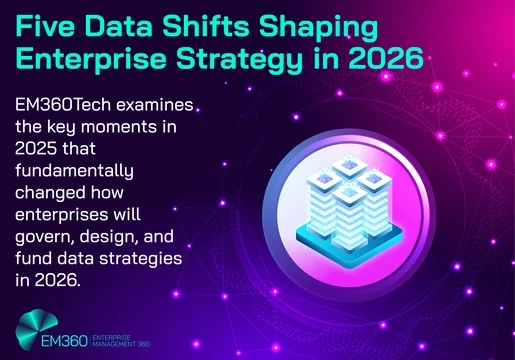This article is contributed by Emily Newton, Editor-in-Chief of Revolutionized.. who is an industrial and tech journalist who's passionate about how technology is revolutionising each sector.
The growing importance of cloud systems has made errors in cloud management even more painful.
Manually provisioning and configuring cloud resources can introduce the risk of human error. Many businesses are turning to cloud management automation solutions to improve efficiency and decrease risk. They reduce or eliminate the labor needed to provision and configure cloud workloads and services.
Rolling out an automation solution can be challenging, however. These best practices will make it easy for your team to adopt management automation.

Why Invest in Cloud Management Automation?
Cloud automation allows a team to create, modify, configure and deprovision cloud resources automatically. It makes it easier to use the cloud as an on-demand reservoir of computing resources with less need for frequent manual testing, provisioning, analysis and deprovisioning.
The automated system can manage cloud resources according to preset rules, guidelines and cloud data, reducing the labor needed and freeing up workers for more important tasks.
In general, automating tasks makes governance and good cloud data management much more straightforward. The team can automate important tasks like backups and ensure some level of standardization across a company’s cloud deployment. Successful DevOps sometimes requires automation or orchestration.
Cloud automation can also help improve cloud security. It reduces the risk of vulnerabilities due to human error or malicious actors who have compromised an employee account.
Most teams currently face various cloud security threats they must account for. Automation can make it easier to manage these risks and plug potential vulnerabilities.
Orchestration and automation are sometimes used interchangeably, but the former typically goes beyond the latter.
Orchestration means a team schedules and integrates multiple automated tasks to function together as a process or workflow. Individual jobs flow into one another, share information or otherwise link together. The orchestrated system builds on automation and is slightly more complex than one that simply automates individual tasks.
A team that automates its cloud management could consider orchestrating cloud tasks in the future. Orchestration can provide additional benefits.
Best Practices for Rolling Out Cloud Automation
Cloud automation is typically managed through a handful of specialized tools. Many teams utilized ad-hoc scripts intended to automate individual tasks in the past. Now, the growing demand for efficiency and standardization has driven teams to adopt more robust tools.
Configuration management tools like Puppet or Red Hat’s Ansible, often combined with containerization tools like Docker, typically form the foundation of a cloud automation strategy. These management tools streamline workflow automation, implement effective governance, and improve the security and compliance of an automation strategy.
Container management is also important if a team goes beyond automation and begins orchestrating tasks across nodes. A tool like Kubernetes allows for the orchestration of Docker containers.
The specific strategy a team uses to roll out cloud automation will need to be tailored to the team’s particular needs. Still, some best practices for cloud automation management rollouts will almost always apply.
Planning for Cloud Automation Rollout
A team may need to automate the migration of multiple workloads to the cloud. It would probably begin with a cloud readiness assessment. During this assessment, the team would take stock of existing IT resources and infrastructure.
The team would also review the workloads and resources that need to be moved to the cloud. Critical or essential workloads will likely be prioritized for migration over less important ones, and determining which are necessary will be a significant part of the process.
This assessment and planning process typically cannot be automated, though programs like the AWS Migration Acceleration Program (MAP) can help teams accelerate the early phases of migration.
Designing the Automation Strategy
A team that has identified critical workloads and established a clear automation strategy goal can determine how automation will be implemented.
The team will research and identify automation tools, prepare cloud environments and introduce governance that will keep the migration process consistent over time. Team members may also choose a cloud provider if there is not already an obvious choice.
After the team has identified the tools it will use to implement its migration strategy, it can work toward the actual migration process.
Building and Deploying Cloud Automation Software
The team will use migration tools to replicate on-site workloads without disrupting the function of any important business applications or services. They will be stored in a cloud-native format ahead of deployment.
Now it’s time to use the suite of automation tools to move these workloads to the cloud. They can time migration carefully to minimize the risk of downtime and ensure members can respond quickly if something goes wrong.
After essential workloads are moved to the cloud, the team may begin to schedule the migration of less important work. Employees will monitor progress and intervene as needed. They will then review the migration process to ensure it was completed successfully.
The team will then double-check migration success and gather data. After the review, they will have a chance to discuss the migration, name wins, identify losses and determine how to better use cloud automation software in the future.
Planning for a Successful Rollout of Cloud Automation Software
Cloud management solutions can help businesses streamline operations while reducing the risk of human error. Implementing these tools successfully usually requires significant planning and design.
Taking advantage of existing cloud management software can help businesses standardize their approach and accelerate the process. This will lead to a smooth process and successful implementation.







Comments ( 0 )